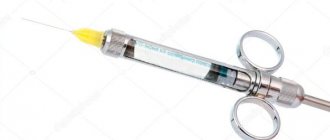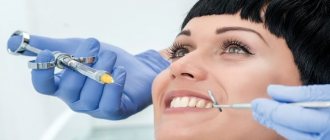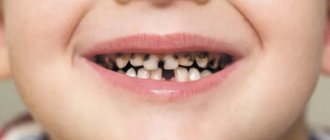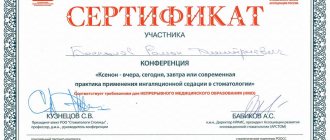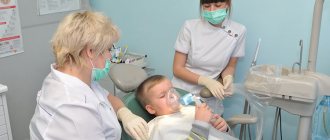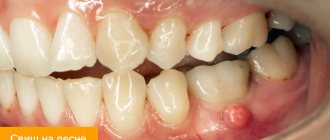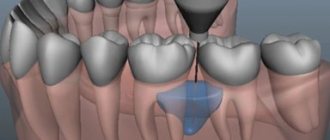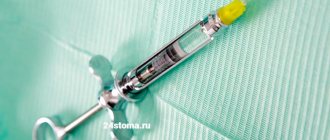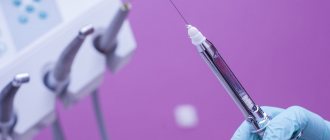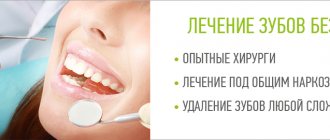Toothache is a problem that almost every person is familiar with. It signals existing pathologies of the dental system, but not all people immediately turn to dentists. This is due to patients’ fear of the painful sensations associated with visiting the dentist’s office. These fears are completely unfounded, since the anesthesia used in dentistry allows for high-quality anesthesia of the area in the oral cavity where manipulations will be performed.
Features of local anesthesia.
For the so-called “Risk Group (GR)”, some components of local anesthesia may be especially dangerous.
Categories of patients who belong to GR:
- experiencing increased fear (fear) of treatment, doctors;
- with drug intolerance;
- with some hereditary diseases;
- women during pregnancy (in extreme cases, anesthesia is used, only in the second trimester);
- women during lactation.
When using local anesthesia, the doctor faces several tasks:
Firstly, the selection of local anesthesia should be such as to completely eliminate sensitivity to pain in the area of intervention and obtain maximum effectiveness during and after the operation.
Secondly, choose a drug that will minimize the impact of individual substances contained in the drug.
Please note that if, after anesthesia, you still feel PAIN, then most likely there was an insufficient dose of anesthesia or the anesthesia was administered incorrectly!
An experienced dentist must be well versed not only in the actions of anesthetic drugs from various companies, but also in their chemical composition.
The doctor must know:
- duration of action of the local anesthetic drug,
- time of its elimination from the body,
- toxicological properties,
- the use of an anesthetic with other dental drugs in different combinations and different concentrations.
Contrary to people's expectations, modern medicine has moved so far forward that it makes any treatment very easy and comfortable even for the most pampered patients.
The Imperial Clinic invites you to experience the latest developments in anesthesiology and feel comfort instead of fear and pain.
Dental anesthesia during pregnancy
Dental treatment for pregnant women is usually carried out in the second trimester. In the first trimester, it is recommended to completely abandon any medications, since during this period the formation of organs in the child occurs, and in the last trimester the reflex excitability of the uterus increases.
Dental anesthesia during pregnancy is carried out using drugs that have the least effect on the fetus. Mepivacaine and bupivacaine are not used for dental anesthesia during pregnancy , as they easily penetrate the transplacental barrier and cause a slowdown in the fetal heart rate. Preference is given to 2% lidocaine in combination with a vasoconstrictor component with or without long-term treatment.
Compositions of components of modern local anesthesia drugs
The components of a local anesthetic (or local anesthetic) are substances such as:
- Local anesthetic (articaine, bupivacaine, lidocaine, mepivacaine, novocaine, prilocaine, trimecaine, etidocaine);
- Parahydroxybenzoates (food additives);
- Substance for constricting blood vessels - Vasoconstrictor (adrenaline or epinephrine, mesaton, norepinephrine or norepinephrine, felypressin or octapressin);
- Stabilizers (sodium sulfite, potassium sulfite).
Drugs used for local anesthesia do not always contain all of the above components.
To block impulses along the nerve endings, only one local anesthetic is enough, but for a longer action and to enhance the effect of anesthesia, vasoconstrictors are used.
Almost all new, local, anesthetic drugs, although to varying degrees, are vasodilators, so vasoconstrictors, being a vasoconstrictor, help concentrate the anesthetic, just in the area of dental intervention.
If you have contraindications to substances such as adrenaline, mesaton, norepinephrine or felypressin, then a local anesthetic can be used without a vasoconstrictor, but this reduces the useful time of the analgesic effect.
The presence of stabilizers and preservatives in modern drugs suggests that these anesthetics have a long shelf life.
Using a vasoconstrictor
The choice of dilution of the vasoconstrictor depends on the expected duration of the intervention and the presence of concomitant pathology in the child. As a rule, the duration of treatment for a child does not exceed 20-30 minutes. Longer intervention negatively affects the child’s psyche and his attitude towards dental treatment. In particular, fatigue increases, attention decreases, and the need for physical activity arises. All this disrupts cooperation between the doctor and the child, which is sometimes achieved with great difficulty.
In most cases, when treating caries and its complications, removing temporary teeth, there is no need to provide long-term anesthesia with anesthetics with a high content of epinephrine (1: 100,000) (Rabinovich S. A., Zoryan E. V., 2006).
After dental treatment, it is important to warn parents that the child can injure the tissues of the lips and cheeks without feeling them after local anesthesia. The duration of the “numbness” period is on average 2 hours for anesthetics 1:200000 and 5-6 hours for anesthetics 1:100000. Naturally, a long period of “numbness” of soft tissues is unfavorable and can lead to injury (the child, without feeling pain, bites the “numb” tissue), which in some cases can lead to extensive wound defects and subsequent deformation of the red border of the lips.
The doctor must be aware of the full extent of responsibility when using anesthetics 1:100000, which provide unreasonably long anesthesia. When administering anesthesia to children, especially for the first time, it is imperative to warn parents and talk with the child about the possibility of self-injury of soft tissues that are “numb” from anesthesia.
ANESTHETICS WITH HIGH VASOCONSTRICT DILUTION 1:100000
In pediatric practice, they are used only for a number of surgical interventions for the purpose of hemostasis. The duration of anesthesia is 75 minutes for dental pulp and 360 minutes for soft tissues.
Such outpatient interventions include the removal of an impacted, supernumerary tooth, apperculectomy, cystectomy, plastic surgery of the frenulum and vestibule of the oral cavity, and removal of a tumor. The use of anesthetics with high dilutions of epinephrine for other types of dental interventions is unjustified and disproportionate to the volume of intervention.
ANESTHETICS WITH LOW VASOCONSTRICT DILUTION 1:200000
Indicated for most outpatient interventions in pediatric dentistry. 4% articaine 1:200000 provides anesthesia for soft tissues for 180 minutes and dental pulp for 45 minutes, which satisfies the protocol for most outpatient interventions.
Currently, anesthetics based on 4% articaine with epinephrine 1:400000 have appeared in European countries. They provide anesthesia for dental pulp tissue for 20 minutes and soft tissue for 1 hour. This anesthetic provides the duration of anesthesia required by the doctor and a short period of “numb” tissue, which is so important for pediatric patients. Currently, these anesthetics are not certified in the Russian Federation, but work is underway to introduce them into domestic dentistry.
It is also worth noting that there is no difference in the depth of anesthesia and effectiveness between anesthetics with vasoconstrictors 1:100000, 1:200000 and 1:400000. There is a difference only in the duration of local anesthesia of the dental pulp: 25, 45 and 75 minutes, respectively. Many dentists mistakenly divide anesthetics into “strong” (1:100,000) and “weak” (1:200,000). This statement is misleading.
For short-term interventions in children with concomitant pathologies, the use of anesthetics without a vasoconstrictor is indicated. However, their use does not guarantee complete safety and does not reduce the risk of complications. It is worth noting some of their pharmacological features. Vasoconstrictors are added to the local anesthetic solution not only to increase the duration of pain relief, but also to reduce their toxicity.
The fact is that all anesthetics have a vasodilating effect and undergo fairly rapid absorption into the bloodstream. The addition of a vasoconstrictor slows the absorption of the anesthetic and prolongs its action. When using an anesthetic without vasoconstrictors, this effect does not occur. The anesthetic is forced into the blood, which can lead to a toxic reaction. This complication is possible if the permissible dosage is exceeded, which is different for anesthetics with and without a vasoconstrictor. In summary, it should be noted that anesthetics without a vasoconstrictor do not affect the functioning of the cardiovascular system, are less allergenic since they do not contain preservatives, but due to accelerated absorption they are toxic and safe to use only if the dosage is observed.
ANESTHETICS WITHOUT VASOCONSTRICTER
Provide varying durations of pain relief for dental tissues. In particular, 2% lidocaine provides anesthesia of the dental pulp within 5 minutes, while the rate of onset of anesthesia is also 5 minutes, which is unsatisfactory for the doctor. Therefore, the use of 2% lidocaine without a vasoconstrictor is inappropriate for dental anesthesia.
3% mepivacaine, in comparison with other anesthetics, has a less pronounced vasodilator effect, which makes it possible to use it without adding a vasoconstrictor. The anesthetic provides pain relief for 10-20 minutes, while treatment must be carried out from the 5th to 20th minute during therapeutic interventions and from the 10th to 20th during tooth extraction surgery.
Articaine 4% is currently available in the Russian Federation. This anesthetic is short-acting: anesthesia of dental pulp for 6 minutes, soft tissue for 45 minutes. Its widespread use in pediatric dentistry is limited due to its short action, which is not suitable for most interventions.
DOSAGE
In all cases of local anesthesia, it is necessary to calculate the dosage of the administered anesthetic in terms of the child’s body weight. For articaine preparations with a vasoconstrictor, the recommended dosage is 5 mg per 1 kg of weight. Before performing local anesthesia, the child’s weight is checked with the parents. In clinical practice, it is convenient to use a table with weight and the maximum permissible dose of the administered anesthetic (Table No. 1, 2).
Table No. 1
| WEIGHT | MG | ML | CARPOOLS |
| 10 | 44 | 1.5 | 0.8 |
| 15 | 66 | 2.2 | 1.2 |
| 20 | 88 | 2.8 | 1.4 |
| 25 | 110 | 3.6 | 1.7 |
| 30 | 132 | 4.4 | 2.4 |
| 35 | 154 | 5.1 | 2.9 |
| 40 | 176 | 5.9 | 3.2 |
| 45 | 198 | 6.6 | 3.6 |
| 50 | 220 | 7.3 | 4.0 |
| Mepivacaine 3% without vasoconstrictor. Maximum dose 4.4 mg/kg. 3% solution in 1 carpule 1.8 ml (54 mg). | |||
Table No. 2
| WEIGHT | MG | ML | CARPOOLS |
| 10 | 50 | 1.2 | 0.69 |
| 15 | 75 | 1.9 | 1.0 |
| 20 | 100 | 2.5 | 1.4 |
| 25 | 125 | 3.1 | 1.7 |
| 30 | 150 | 3.7 | 2.1 |
| 35 | 175 | 4.4 | 2.4 |
| 40 | 200 | 5.0 | 2.8 |
| 45 | 225 | 5.6 | 3.1 |
| 50 | 250 | 6.2 | 3.4 |
| Articaine 4% with a vasoconstrictor. Maximum dose 5 mg/kg. 3% solution in 1 carpule 1.8 ml (72 mg). | |||
Quite often, at outpatient dental appointments we encounter children suffering from obesity and metabolic syndrome, which is largely due to changes in the nutritional culture of the population. The dosage of the administered anesthetic in these cases has some peculiarities. In particular, if the doctor is going to administer anesthesia to an overweight child, the dosage of the administered anesthetic is calculated without taking into account adipose tissue.
Contraindications for the use of local anesthesia
All contraindications to the use of a local anesthetic can be combined into 3 points:
- Hypersensitivity of the body's immune system to local anesthetic:
- In this case, the attending physician selects the painkiller that is most suitable for the planned dental intervention (depth, duration, nature). - Insufficiency of the patient's metabolic regulation system (cleaning and excretion):
- This takes into account the peculiarities of the pathology of the patient's body, his general somatic condition, as well as the presence of contraindications. - Age limit:
- At this point, the dosage of local anesthetic drugs is taken into account, taking into account the age of the patient (child or elderly person) Criteria for choosing a local anesthetic drug (anesthetic).
Types of drugs for topical anesthesia
Application anesthesia is used by doctors at the Imperial Clinic for complete patient comfort in the form of ointments, solutions and aerosols. Using this product makes the penetration of the needle completely imperceptible.
Local anesthetics used in dentistry "Imperial"
| Name | View | Maximum single dose |
| Dicaine / Tetracaine | 0.5-4% solution or ointment | 20 mg |
| Anestezin / Benzocaine | 5-20% solution, ointment, paste, powder | 5 g |
| Lidocaine | 5-15% aerosol, 2-5% ointment, gel | 200 mg (0.2 g) |
| Pyromecaine / Bumecaine | 5% Ointment 2% solution in ampoules | 400 mg (0.4 g) |
Anesthesia of the desired area, when using topical anesthesia, occurs in one to two minutes, to a depth of 1-3 mm and lasts from 10 to 20 minutes.
Premedication - preparation for anesthesia
Premedication is the use of one or more medications immediately before surgery to facilitate anesthesia and reduce the risk of possible complications.
The most common premedication is sedation.
Sedatives used for premedication:
- Herbal preparations (tincture of motherwort, valerian, valocordin, corvalol, valoserdin, etc.)
- Benzodiazepine tranquilizers (phenazepam, diazepam, midazolam, etc.)
- Chemicals (eg trioxazine).
Indications for the use of sedative anesthesia for premedication
- Fear, horror, of dental treatment,
- impaired blood supply to the myocardium (coronary heart disease),
- high blood pressure (hypertension),
- attacks of suffocation due to bronchial spasms and swelling of the mucous membrane (bronchial asthma),
- endocrine diseases (eg diabetes mellitus),
- intoxication with thyroid hormones,
- Parkinson's disease,
- chronic neurological stereotypical seizures (epilepsy),
- finally, simply the desire of the patient himself.
INJECTION INSTRUMENTATION
For local anesthesia in children, carpule syringes of various designs are used. Preference should be given to injectors intended for carrying out an aspiration test (Rabinovich S. A., Vasilyev Yu. L., Sokhov S. T., 2013; Tarasenko S. V., Kuzin A. V., Belyaeva E. A., Kurtyshov A. A., 2013). Local injection anesthesia in children carries the risk of intravascular injection of local anesthetic. This fact is explained by the high degree of vascularization of the tissues of the maxillofacial region of children. Thus, the frequency of intravascular administration of an anesthetic during mandibular anesthesia in adults is 10-15%, and in children - 20-25%.
Syringes with a plunger in the form of an anchor and a corkscrew have the best technical characteristics. The choice of injection needle depends on the method of anesthesia. For conductive methods, needles with a diameter of at least 0.4 mm (27G) should be used. When conducting conduction anesthesia, 0.3 mm (30G) needles bend excessively in the tissues (deflection), which leads to the deposition of the anesthetic away from the intended end point of pain relief (Rabinovich S. A., Vasiliev Yu. L., 2011).
Needles 0.3 mm (30G) are advisable to use for infiltration anesthesia and periodontal methods of pain relief.
Do not forget that when performing local anesthesia, the needle may break off. This complication, as a rule, occurs when the child makes sudden movements: withdrawing the head, abruptly closing the mouth. In most cases, these severe complications occur when using 30G needles when performing mandibular anesthesia in children.
There is an opinion that the thinner the needle, the less painful the patient perceives the stage of puncturing the mucous membrane and advancing the needle into the tissues. This opinion can be classified as a misconception. There are studies confirming that the diameter of the needle does not affect the reduction in the degree of pain of the anesthesia (Malamed SF, 2002).
Carrying out general anesthesia (general anesthesia) in dentistry
Anesthesia is one of the methods of pain relief, based on blocking the patient’s consciousness due to deep inhibition of sensitivity, synapses of the cerebral cortex, using various drugs.
In connection with new developments in anesthesiology, our dental clinic stopped using anesthesia with inhalation of a specialized gas and began to use a new licensed method called SEDATION (introduction of drugs into the body that put the patient into a short-term controlled drug sleep). The cost of the new sedative method of anesthesia for 20 minutes is 3,700 rubles.
Depending on how medications are introduced into the body, several types of sedation can be distinguished:
- Inhalation sedation
- Oral sedation
- Intravenous sedation
In dentistry, intravenous superficial sedation is most often used. So, as with shallow sedation, all body functions continue their normal activities, and the person is as if in a dream.
Sedation is a modern approach to dental treatment while you sleep and at rest. Video
Why do you need pain relief during dental treatment?
There are many times more nerve fibers in the tissues of the tooth than in the skin area; moreover, fibers with a high speed of pain conduction predominate in the tooth, so toothache is the most severe and unbearable. When treating teeth, it is very important for the doctor to properly anesthetize the teeth so as not to cause pain to the patient, as well as to eliminate unnecessary sudden movements during dental treatment caused by pain in the tooth, which can lead to a decrease in the quality of treatment or even breakage of the instrument. Many patients, fearing an injection, ask to have their teeth treated without anesthesia . However, the body's reaction is broader than just the painful sensations that the patient agrees to endure. Pain leads to a sharp release of adrenaline in the body, which causes an increase in heart rate, increased blood pressure, and increased sugar levels. Thus, anesthesia during dental treatment prevents the deterioration of the patient’s general condition. Painful sensations during dental treatment are well fixed in memory, and the next time we go to the dentist, our memory helpfully gives us the whole range of sensations, which already before treatment causes the release of adrenaline with all the ensuing consequences. Anesthesia during dental treatment reinforces the body’s normal reaction in memory and creates psychophysiological comfort.
